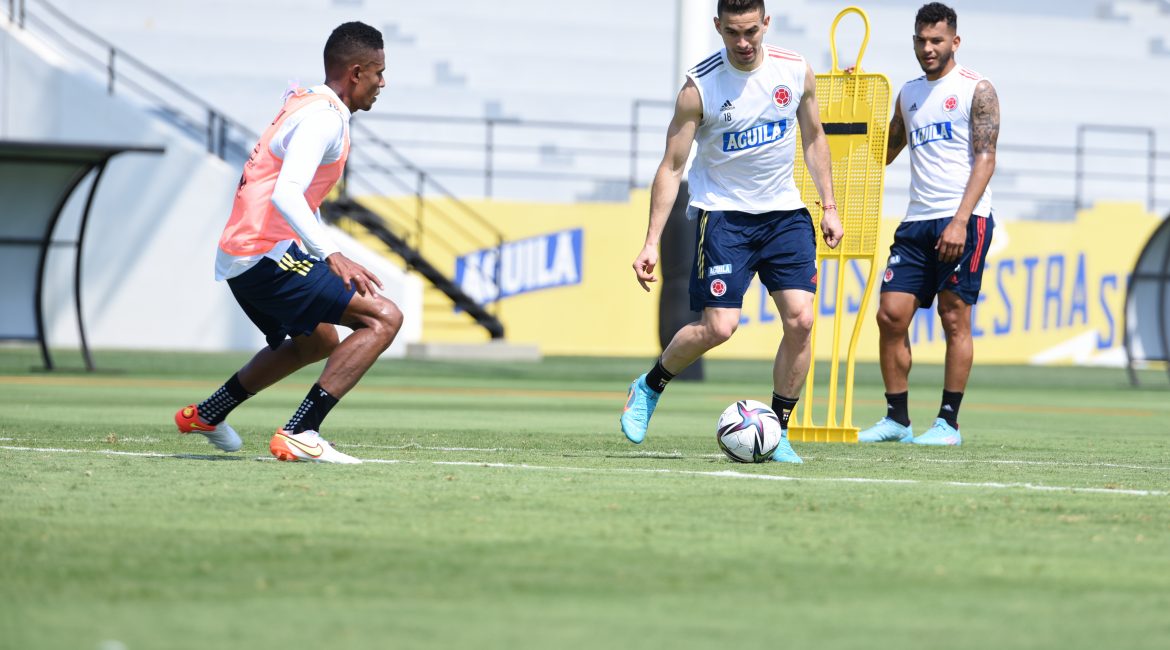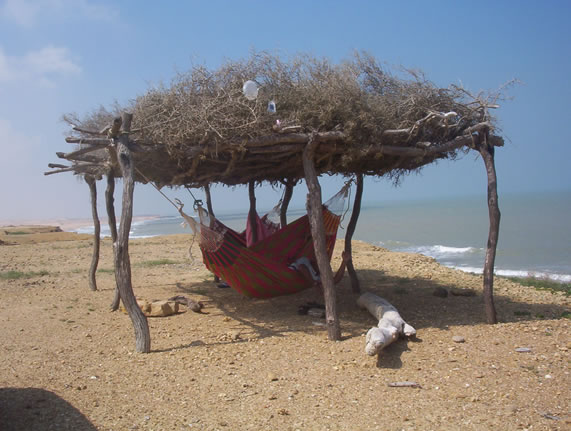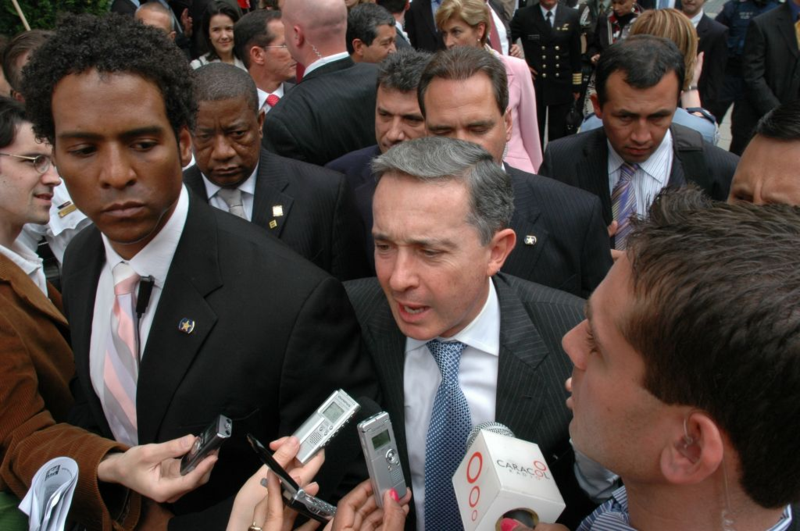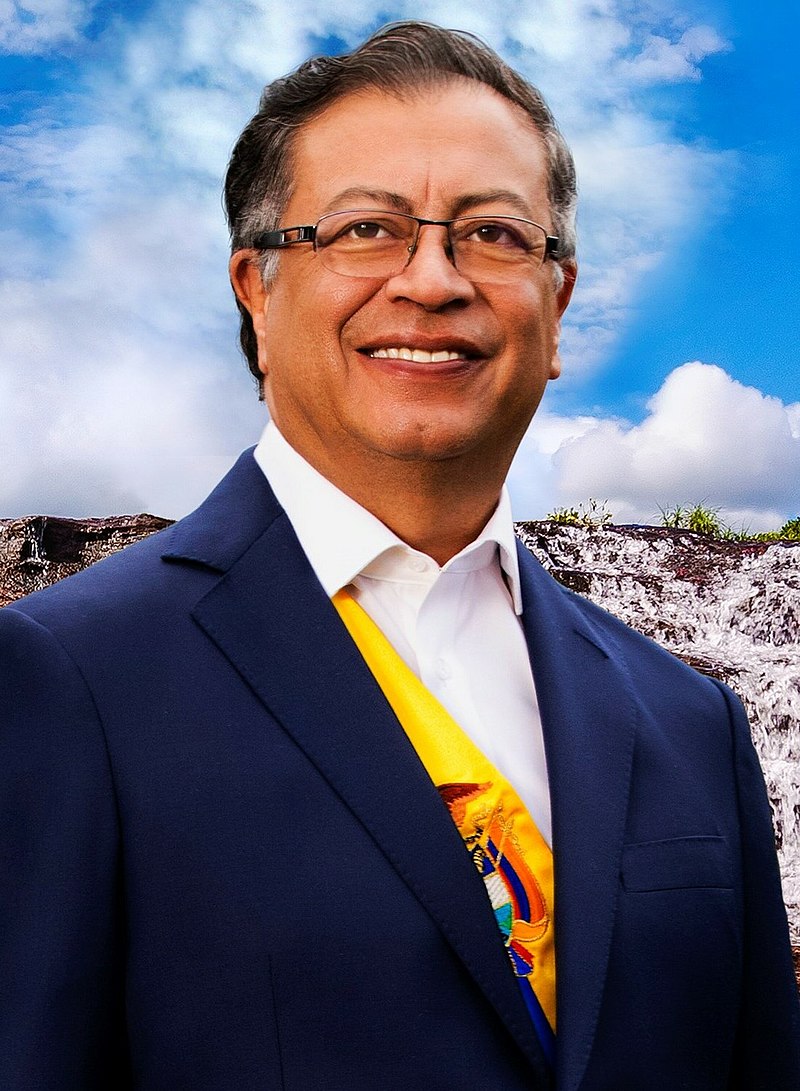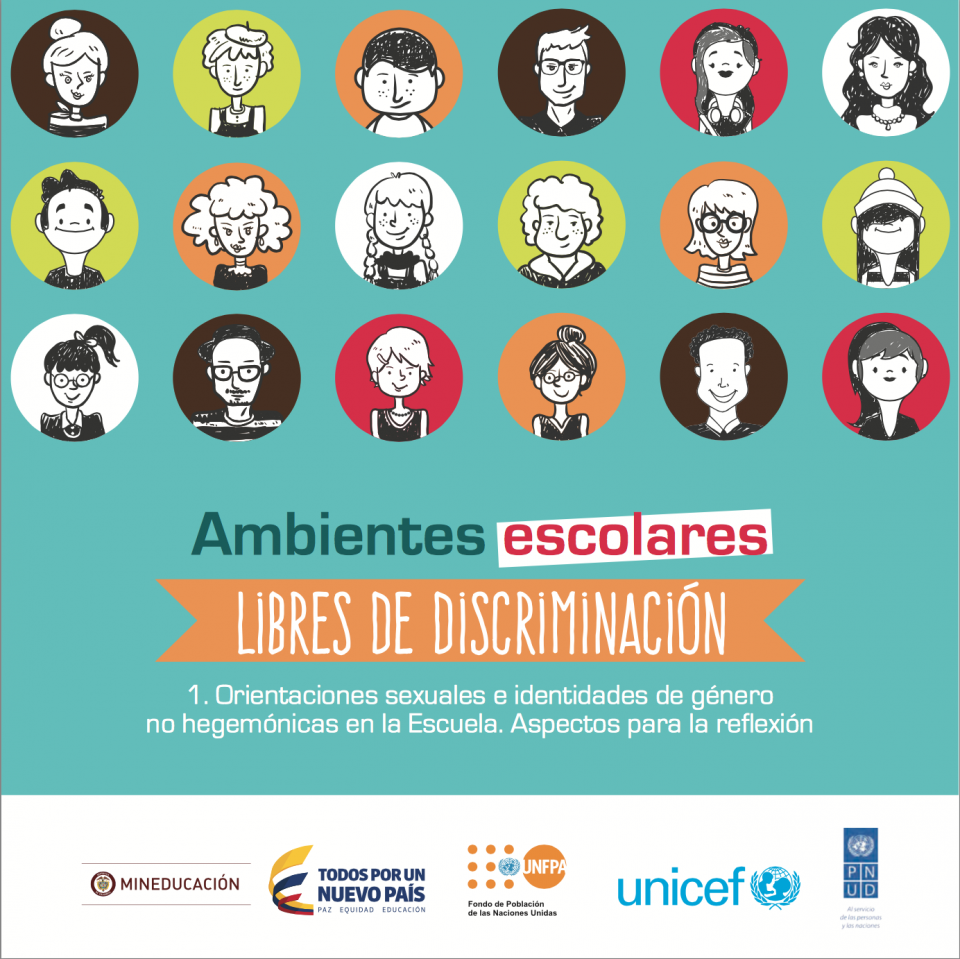
The cover of the document promoting education equality, which sparked outrage.
The question of gender ideology in education has proved inflammatory – and one that reveals undercurrents of homophobia in our society, as Laura Brown discovers.
Sadly, homophobia is an issue that many societies around the world face, and Colombia is no different.
In recent months serious questions have been raised about the question of sexuality, homosexuality and the treatment of LGBTI people, particularly in the country’s schools.
A row erupted at the beginning of August following the publication of a document entitled Ambientes escolares libres de discrimination (School environments free of discrimination), a joint document written by UNICEF, Colombia Diversa and the United Nations Population Fund (UNFPA).
The booklet explains concepts such as sex, gender and sexual orientation and seeks to inform teachers and administrators about how to avoid discrimination.
However, it was retracted after a meeting between the president and two religious leaders.
If it had been approved, it would have helped the Ministry of Education to comply with last year’s Constitutional Court ruling that it needed to review all of its manuals regarding diversity.
This followed the case of Sergio Urrego, a Bogotá teenager who took his life in August 2014 after being bullied both in and by the school, due to his sexual orientation. The Constitutional Court ruled that Sergio had a right to an education free from discrimination and also ordered his school to apologise.
UNICEF has been working with schools in Colombia for several years; in fact its work here was the origin of an Escuelas Nuevas model that has since been implemented in other countries.
Gender discrimination is one of the issues that has been highlighted by UNICEF as an impediment to learning in schools worldwide. In fact, it is not just UNICEF – several organisations have raised concerns that LGBTI students are more likely to experience bullying and physical harassment, and a 2011 study in the Journal of Adolescent Health found that young people who identified as LGBTI were three times more likely to commit suicide than their heterosexual counterparts.
So why the big storm over a booklet promoting anti-discriminatory practices in schools? One problem was a prankster posting a fake version of the material, which included pornographic images, on social media.
Another is that Gina Parody, the minister for education, is openly gay. While that meant she was well placed to argue the case for the need to create educational environments that are free from discrimination, at the same time it made her vulnerable to accusations of somehow attempting to indoctrinate children.
This only added to the angst among certain groups of people already objecting to what they perceived as the promotion of homosexuality through the addition of “gender ideology” into the education systems.
The backlash saw a heated debate in the senate and a massive protest movement, in which thousands of people marched in support of family values on the streets of different Colombian cities on August 10.
The spat only serves to highlight the need for diversity education in a country where many LGBTI students talk about being victimised.
One such example is Alberto, a 24-year-old from Barranquilla, who said he was bullied at school because of his sexual orientation, and none of the teachers helped.
“I don’t talk to anyone from school anymore”, he explained. “I just wanted to block out all the bad memories. I don’t have any friends from that time.”
Alberto moved to Bogotá about a year ago, and says that life is much easier for him in the capital than in the coastal city.
“The society in Barranquilla is much more closed, so there is a lot of homophobia. I was never able to tell anyone that I was gay there, but when I moved to Bogotá I felt more comfortable.
“Here, for example, if I go out with my boyfriend, we can go to the cinema or shopping malls together without raising too many eyebrows.
“We can even walk hand in hand if we want to, something that would never happen in Barranquilla. In fact, I’d say that probably about 80% of the gay people in Barranquilla are in the closet. They just can’t come out for fear of victimisation.”
In contrast to Barranquilla, where nobody except his mother and siblings know that he is gay, Alberto says most people in Bogotá know and don’t treat him any differently for it, including his work colleagues and friends.
“My mom stopped talking to me about a year ago, after she found out”, he lamented. “She’s Christian, and very religious, so she believes that being gay goes against the Bible.
“We had a big argument after she commented on something I had posted on Facebook about gay marriage in Colombia. She made a homophobic comment, and in response I told her that I was gay. She insulted me and all my friends and we don’t speak anymore.”
Alberto’s siblings were supportive and have accepted him, but nobody has told his dad, who is a police officer and prone to violence.
“The fear is that he could take it out against my younger brother, so I decided not to tell him while my brother is still living with him.
“Nobody can even explain why they are anti-gay”, he said. “I have tried to have this conversation with so many people, and there is no logical argument. It all comes back to religion, and that ‘God created Adam and Eve, not Adam and Steve’.”
On the other hand, Kade, a gay Jamaican living in Bogotá, said Colombia is much further ahead in terms of accepting homosexuality than his native country.
“I don’t see how it would make sense to ignore that gay people exist”, stated Kade. “I think it’s important from an early stage to teach children that there are people with different views, and that, while we don’t have to agree on everything, it’s important that we can listen to each other’s opinions.
“I think homophobia exists everywhere I’ve travelled, but in Colombia younger people are definitely more tolerant and accepting than in Jamaica. In fact, most of my Colombian friends are not gay, yet they go out with me to gay clubs and bars. I have never felt that I have to hide.”
He also linked the lack of tolerance in Jamaica to religion, saying Christian people are afraid that they will be judged for accepting homosexuality.
“Kids whose parents find out they are gay often get kicked out of their home and end up homeless, sleeping under bridges and in storm drains.”
While attitudes are slow to change, they are at least moving more towards acceptance. The general trend in Colombia seems to be that gay men in their 20s are more open about their sexuality, those in their 30s have come out only to close friends but not their family, and gay men over 40 are married. Perhaps, then, discrimination will be less for generations to come.
By Laura Brown


